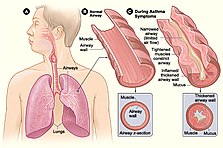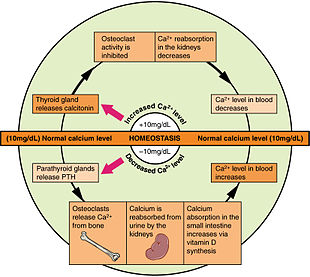We're for all- ALL are for us for the greater interest of Humanism-Truth-Facts-Friendship-Unity-Participation including Physico-Mental Sound Health with Spirituality, enrichment through ''TOTAL HEALTH SOLUTION'' to a Well-furnished GOALofTruth alloted for all in real sense ;
From wikipedia & other reliable sources ( Poets, Writers, Thinkers, Researchers, Free Lancers, Philosophers, Theologists, Scientists, Orators, Sociologists and Photographers +Artists-Musicians & etc.) we can learn as follows :


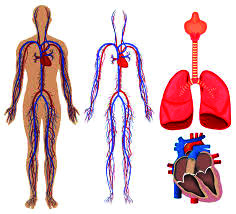
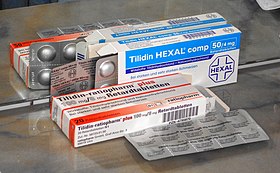


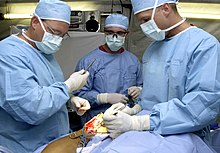
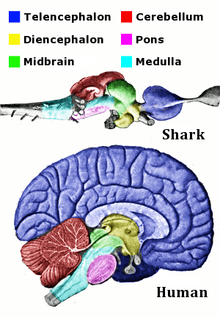
''Conventional medicine, also called Western medicine or modern medicine, is when healthcare professionals such as doctors, nurses, and therapists use scientific research to diagnose and treat symptoms and conditions. Examples of conventional medicine include: pharmaceutical medications. physical rehabilitation.
Conventional treatment or Conventional therapy is the therapy that is widely used and accepted by most health professionals. It is different from alternative therapies, which are not as widely used. Examples of conventional treatment: some treatment for cancer include surgery, chemotherapy and radiation therapy.
Medical availability and clinical practice varies across the world due to regional differences in culture and technology. Modern scientific medicine is highly developed in the Western world, while in developing countries such as parts of Africa or Asia, the population may rely more heavily on traditional medicine with limited evidence and efficacy and no required formal training for practitioners.[8]
In the developed world, evidence-based medicine is not universally used in clinical practice; for example, a 2007 survey of literature reviews found that about 49% of the interventions lacked sufficient evidence to support either benefit or harm.[9]
In modern clinical practice, physicians and physician assistants personally assess patients in order to diagnose, prognose, treat, and prevent disease using clinical judgment. The doctor-patient relationship typically begins an interaction with an examination of the patient's medical history and medical record, followed by a medical interview[10] and a physical examination. Basic diagnostic medical devices (e.g. stethoscope, tongue depressor) are typically used. After examination for signs and interviewing for symptoms, the doctor may order medical tests (e.g. blood tests), take a biopsy, or prescribe pharmaceutical drugs or other therapies. Differential diagnosis methods help to rule out conditions based on the information provided. During the encounter, properly informing the patient of all relevant facts is an important part of the relationship and the development of trust. The medical encounter is then documented in the medical record, which is a legal document in many jurisdictions.[11] Follow-ups may be shorter but follow the same general procedure, and specialists follow a similar process. The diagnosis and treatment may take only a few minutes or a few weeks depending upon the complexity of the issue.
The components of the medical interview[10] and encounter are:
- Chief complaint (CC): the reason for the current medical visit. These are the 'symptoms.' They are in the patient's own words and are recorded along with the duration of each one. Also called 'chief concern' or 'presenting complaint'.
- History of present illness (HPI): the chronological order of events of symptoms and further clarification of each symptom. Distinguishable from history of previous illness, often called past medical history (PMH). Medical history comprises HPI and PMH.
- Current activity: occupation, hobbies, what the patient actually does.
- Medications (Rx): what drugs the patient takes including prescribed, over-the-counter, and home remedies, as well as alternative and herbal medicines or remedies. Allergies are also recorded.
- Past medical history (PMH/PMHx): concurrent medical problems, past hospitalizations and operations, injuries, past infectious diseases or vaccinations, history of known allergies.
- Social history (SH): birthplace, residences, marital history, social and economic status, habits (including diet, medications, tobacco, alcohol).
- Family history (FH): listing of diseases in the family that may impact the patient. A family tree is sometimes used.
- Review of systems (ROS) or systems inquiry: a set of additional questions to ask, which may be missed on HPI: a general enquiry (have you noticed any weight loss, change in sleep quality, fevers, lumps and bumps? etc.), followed by questions on the body's main organ systems (heart, lungs, digestive tract, urinary tract, etc.).
The physical examination is the examination of the patient for medical signs of disease, which are objective and observable, in contrast to symptoms that are volunteered by the patient and not necessarily objectively observable.[12] The healthcare provider uses sight, hearing, touch, and sometimes smell (e.g., in infection, uremia, diabetic ketoacidosis). Four actions are the basis of physical examination: inspection, palpation (feel), percussion (tap to determine resonance characteristics), and auscultation (listen), generally in that order although auscultation occurs prior to percussion and palpation for abdominal assessments.[13]
The clinical examination involves the study of:[14]
- Vital signs including height, weight, body temperature, blood pressure, pulse, respiration rate, and hemoglobin oxygen saturation[14]
- General appearance of the patient and specific indicators of disease (nutritional status, presence of jaundice, pallor or clubbing)
- Skin
- Head, eye, ear, nose, and throat (HEENT)[14]
- Cardiovascular (heart and blood vessels)
- Respiratory (large airways and lungs)[14]
- Abdomen and rectum
- Genitalia (and pregnancy if the patient is or could be pregnant)
- Musculoskeletal (including spine and extremities)
- Neurological (consciousness, awareness, brain, vision, cranial nerves, spinal cord and peripheral nerves)
- Psychiatric (orientation, mental state, mood, evidence of abnormal perception or thought).
It is to likely focus on areas of interest highlighted in the medical history and may not include everything listed above.
The treatment plan may include ordering additional medical laboratory tests and medical imaging studies, starting therapy, referral to a specialist, or watchful observation. Follow-up may be advised. Depending upon the health insurance plan and the managed care system, various forms of "utilization review", such as prior authorization of tests, may place barriers on accessing expensive services.[15]
The medical decision-making (MDM) process involves analysis and synthesis of all the above data to come up with a list of possible diagnoses (the differential diagnoses), along with an idea of what needs to be done to obtain a definitive diagnosis that would explain the patient's problem.
On subsequent visits, the process may be repeated in an abbreviated manner to obtain any new history, symptoms, physical findings, and lab or imaging results or specialist consultations.
Conventional and complementary treatments have benefits and drawbacks to consider. Each case is different, so a person should talk with a healthcare professional to determine whether they are a suitable candidate for complementary therapies.
Conventional treatments
As the law demands, experts have put conventional treatments, such as chemotherapy and radiation therapy, through rigorous scientific testing to demonstrate their safety and effectiveness.
However, there are some possible drawbacks to conventional medicine. One example is the use of antibiotics, which doctors prescribe to treat bacterial infections.
Antibiotic resistance occurs when bacteria change in response to the use of these medications. The misuse and overuse of antibiotics increaseTrusted Source resistance, limiting infection prevention and control.
Complementary treatments
As research has demonstrated, many complementary treatments — including acupuncture and various supplements — are safe and can be effective. The costs vary depending on the specific therapy, but some may be cheaper than conventional treatment.
However, there is no scientific or medical evidence to show that complementary treatments can help treat or cure conditions such as cancer.
Also, complementary therapies may interact with conventional treatments, potentially causing them to work less effectively or produce more severe side effects.
For this reason, it is important to discuss any complementary treatments with a healthcare professional before taking them alongside conventional treatments.
An integrative healthcare approach combines conventional and complementary treatments. A person should consult a doctor to learn about the potential benefits, risks, and side effects of different treatments and how they affect each other.
A person can work with a doctor and complementary therapist to create a suitable and effective treatment plan. Regular checkups will allow these professionals to modify the treatment plan if necessary.
Conventional medicine is the most common type of medicine in the Western world. Many types of complementary medicine have been around for hundreds of years. However, it is only over the last few decades that doctors have started to use complementary medicines alongside conventional treatments.

Complementary and alternative medicine (CAM)Trusted Source is the term for treatments that are not part of mainstream healthcare. The Centers for Disease Control and Prevention (CDC)Trusted Source note that whereas people use alternative treatments in place of standard treatments, they use complementary treatments alongside them.
This article provides more information on conventional and complementary medicines, including the types, benefits, and risks. It also covers the differences and similarities between these two types of medicine.
Conventional medicine, also called Western medicine or modern medicine, is when healthcare professionals such as doctors, nurses, and therapists use scientific researchTrusted Source to diagnose and treat symptoms and conditions.
Examples of conventional medicine include:
- pharmaceutical medications
- physical rehabilitation
- psychotherapy
- radiation therapy
- surgery
Complementary medicine refers to treatments that people use in addition toTrusted Source conventional medicine. These treatments are not part of standard medicine.
Examples of common types of complementary medicine include:
- aromatherapy
- acupuncture
- herbal medicine
- massage therapy
- visualization
- yoga
Additional types of complementary medicine include:
- biofeedback
- chiropractic
- homeopathy
- hypnosis
- <span segoe="" ui",="" roboto,="" oxygen-sans,="" ubuntu,="" cantarell,="" "helvetica="" neue",="" sans-serif;"="">naturopathy
- <span segoe="" ui",="" roboto,="" oxygen-sans,="" ubuntu,="" cantarell,="" "helvetica="" neue",="" sans-serif;"="">Qi gong
- reflexology
- Reiki
- relaxation
- tai chi
People use conventional medicine to prevent, diagnose, and treat symptoms and conditions.
Doctors may use complementary treatments to alleviate the side effects of conventional medicine and improve the person’s overall quality of life. For example, a person may use complementary treatments to reduce stress, balance emotions, and alleviate fatigue while undergoing chemotherapy.
A 2020 studyTrusted Source investigated the use of CAM treatments for people with fibromyalgia. Two-thirds of the participants used CAM treatments, with the most common therapies being:
- vitamins
- meditation
- massage therapy
The researchers found that people who used CAM treatments alongside pharmacological treatments had a significantly higher quality of life than those who used only the conventional approach.
The authors of a 2020 reviewTrusted Source conclude that acupuncture is an effective treatment for cancer-related fatigue and may help improve the quality of life of those who have survived the disease.
Mind-body therapies focus on the relationship between the mind and body to help treat or manage a condition. Some examples include:
Meditation
Meditation is an ancient practice that is prominent in religions such as Hinduism and Buddhism. Today, there are many forms of meditation people can try; some are religious in nature, and some not.
Many studies have verified that meditation has health benefits. It can lower blood pressure and stress levels. Research suggestsTrusted Source it may also reduce the symptoms of:
- anxiety
- depression
- irritable bowel syndrome
- insomnia
- menopause''
We're for all- ALL are for us for the greater interest of Humanism-Truth-Facts-Friendship-Unity-Participation to a Well-furnished GOAL of Truth from which all shall have ++++;
We're indebted to WIKIPEDIA +WHO for a short while and as 'Guardian QUOTATION' from Global WISER ONE. And have quoted many images, article's, writings etc. by great & humanist writers+++ from global thinkers, Well-wishers, Wiseman, Humanists and Others Living-Nonlivings in favor of HUMANISM to share more answers of Researchers-readers+++++....
To reach the 'GOAL of FULFILNESS' unitedly to alive in the "DESTINATION of TRUTH-FACTS-CHARMEST AMICABLITY" of Natural Joyful POSSIBILITIES+++
BREAST CANCER, TUMOR, Arsenic+Chemical Poisoning, Corona, Heart-Lung diseases, Neurological-Hormonal-Immunal-Infectious diseases with related complexities are possible to cure properly-easily-scientifically-accurately (100%) by our positive medical services only with+++++balance confirming
Medicine-Food control-proper nursing-medicinal massage-Medicinal Yogas- Meditation, Physiotherapy special etc. without side effects & Repeatation as per contract through user-friendly approved ways of CURE++++. please fill our form as below or click:
After confirming contract-letter between you+++. We serve you properly with no Chemo-therapy-radiation therapy -SURGICAL Complexities (Physical-Mental) to CURE+++ upto our Limit to recover your both-health from illness.


















